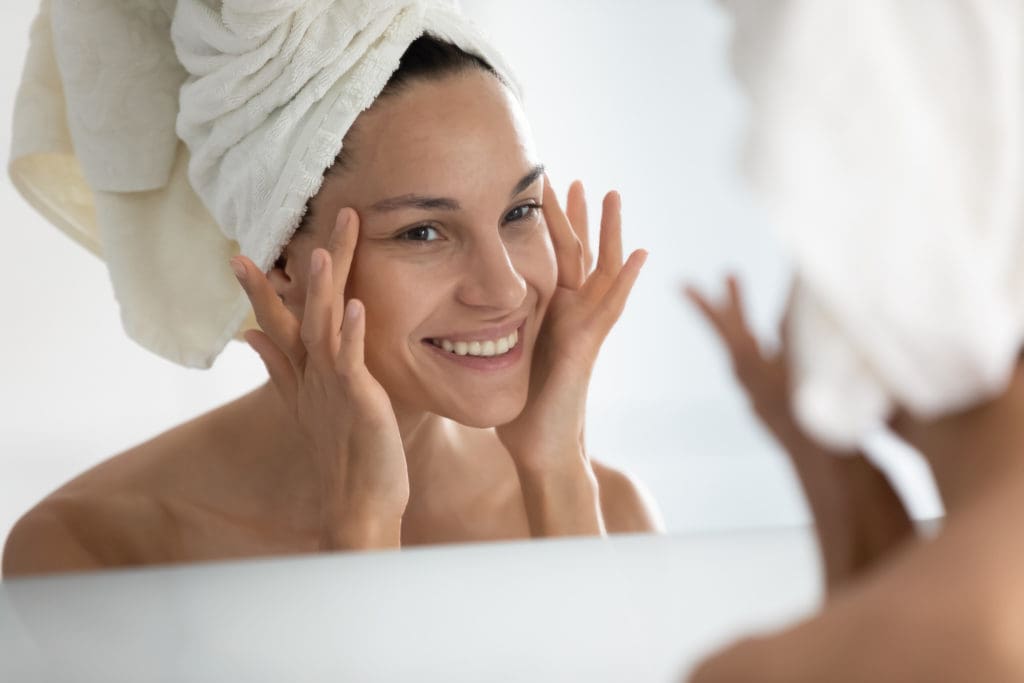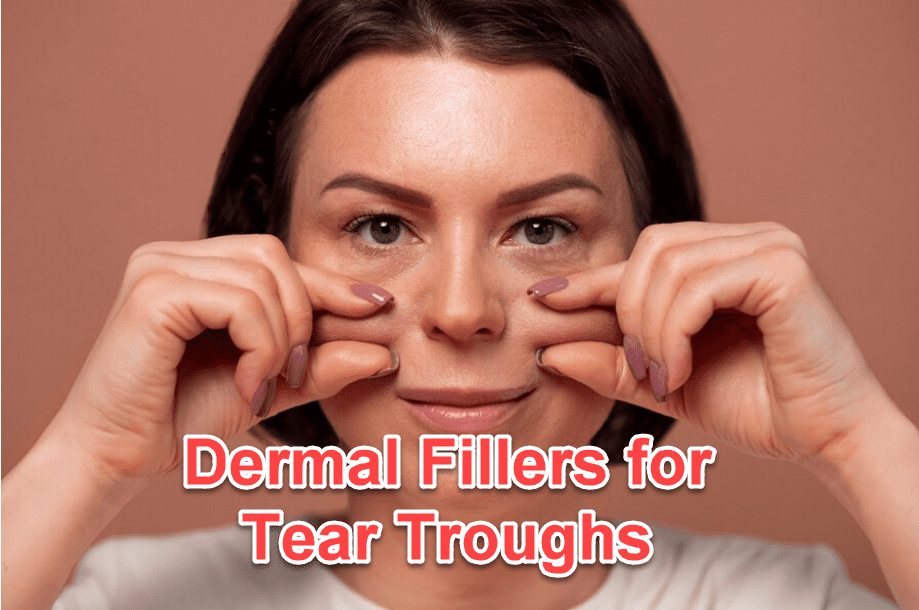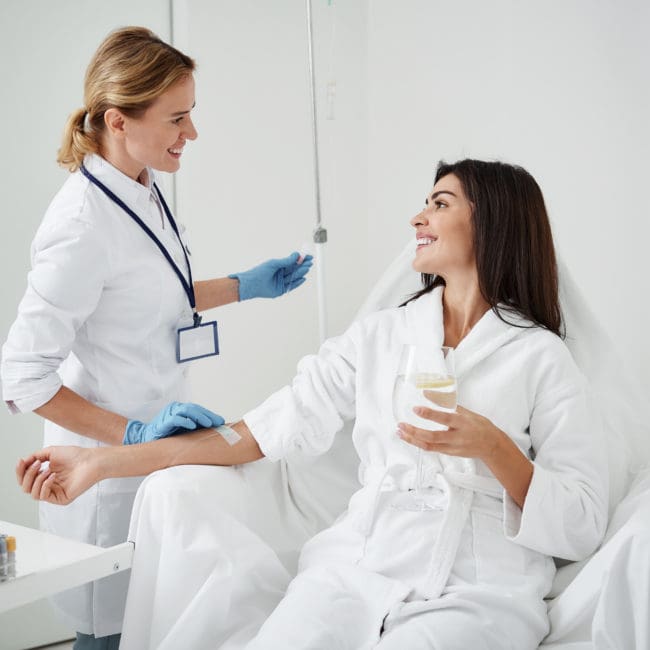Glowing, youthful skin is always in style when it comes to beauty goals. And while serums, creams, and other topical skincare products can provide smoothing and rejuvenating effects, sometimes our complexion needs a deeper refresh. This is where professional chemical peels provide effective skin resurfacing treatments.
It’s an unavoidable truth that our skin changes with age, losing elasticity and collagen that keeps it taught and line-free. Sun exposure, stress, genes, lifestyle, and other factors also show up in lackluster tone, texture irregularities, and visible signs of past damage accumulating on the surface over time.
A fresh start can be as simple as wiping the slate somewhat clean through a clinical procedure that reveals newer skin underneath for a revitalized appearance. What exactly does it take to achieve this complexion rebirth?
Let’s peel back the layers of how chemical peels work their magic.
A chemical peel is a technique used to improve skin’s appearance and texture by applying a chemical solution to the skin. The chemical solution causes a controlled destruction of a part of or the entire epidermis (outermost skin layer), allowing new skin to regenerate.
There are different types of chemical peels varying in strength and depth of exfoliation:
Light Peels: Use mild acids to exfoliate the outer layers of the epidermis with little downtime. Improves overall skin tone and texture.
Medium Peels: Penetrate deeper into the skin using glycolic acid or Jessner’s solution. Treat fine lines, age spots, acne scars, melasma, etc. Requires up to 1 week recovery time.
Deep Peels: Use higher concentrations of trichloroacetic acid (TCA), causing damage to the papillary dermis. Dramatically improve the appearance of wrinkles, scars, and pigmentation. Needs 4-6 weeks of healing time.
How Does A Chemical Peel Work
Chemical peels revive skin by creating controlled damage to the outer layers, prompting the body’s natural healing response.
Different acids essentially burn and irritate the epidermis or dermis to varying intensities based on the solution and area treated. Here’s a breakdown of the peeling process:
- Cleansing & Degreasing Skin is prepped to remove dirt, oils, and makeup that could inhibit chemical penetration.
- Peel Solution Application: The acid formula is painted on treatment areas and left to penetrate the skin for several minutes. Tingling sensations indicate activation.
- Frosting Visual Cue
- The top skin layer whitens with deeper peels, indicating damage penetrating enough to prompt desired renewal effects.
- Neutralization
- The solution is neutralized to stop acid from penetrating further. Skin flushing begins as the inflammation gets underway.
Controlled Injury Healing
In the following days, inflammation and dark pigment come to the skin’s surface as damaged layers are released. Deeper in the dermis, collagen production, and skin strengthening occur. After several days, skin sheds off to reveal glowing skin.
Renewal Finalization
In the following weeks, the skin continues to renew with improved tone and texture. Results emerge gradually corresponding to the depth of the peel solution used.
The key is controlling damage to optimal layers so inflammation and shedding prompt rejuvenation rather than worsening appearance if too aggressive. Skill comes in assessing each patient’s skin condition and goals to determine appropriate peel depth and solutions.
With precise injury, the healing cascade brings forward newer, healthier skin layers with better tone, clarity, and resilience over time. Chemical peels trick the skin into activating its reparative powers for aesthetic improvement far beyond daily skincare efforts.
How Will Your Skin Look After A Chemical Peel
While the idea of shedding skin may sound scary, keep in mind this regeneration process means brand new layers are revealed in their place for improved appearance. Chemical peels aim to make the complexion emerge renewed, glowing, and more youthful looking, depending on the solution and depth of treatment.
But what exactly should patients expect to see in the mirror during the weeks following their treatment session as the skin recovers its radiance?
Immediately after light peels improve overall tone, the skin remains a normal shade while it may feel tighter or slightly sensitive, similar to a mild sunburn. Any pinkness or stinging subsides in a day or less. Moderate and deeper treatments using alpha-hydroxy acids or TCA lead to immediate whitening as darker pigment sheds off, making way for fresh cells.
Redness soon follows as old skin releases its hold, indicating inflammation and collagen rebuilding underway. This gradually shifts to a tanned appearance over days as regeneration peaks before flaking or peeling begins to uncover glowing skin with decreased lines, smoother texture, and improved firmness.
The renewal processes improve skin quality progressively in the deeper dermal layers over the first month.
Some residual redness may remain for another couple of weeks as the skin acclimates to increased sensitivity from thinned epidermis following moderate to deep chemical exfoliation protocols. Patients enjoy optimal rejuvenating results once the skin fully acclimates to its new state, typically one to three months post-treatment.
While chemical peels don’t necessarily prevent all aging or skin issues altogether, consistent light treatments can help maintain a healthy glow and radiance. Even one series of moderate to deep peels may roll back the clock for years before maintenance is needed again.
Benefits of Chemical Peels
- Exfoliate skin, revealing newer, smoother layers.
- Reduce the appearance of fine lines and wrinkles
- Improve skin tone, texture, elasticity
- Treat acne scars, discoloration issues
- Tighten skin and shrink enlarged pores
Chemical peels offer relatively low-risk, non-invasive skin rejuvenation when performed by a licensed provider. They can be done as a series of treatments to combat visible signs of aging with longer-lasting, cumulative effects.
Factors Influencing Formula and Depth Selection
Chemical peels use various acidic solutions with precision to activate this wound-healing cascade. The right formula and depth for each case depends on factors like:
- Type of skin
- Areas being treated
- Patient downtime allowance
- Specific skin concerns
By tailoring the solution and peel intensity, doctors customize to impact either the epidermis or penetrate the second dermal layer as well, according to patient objectives. Gentler peels focus on surface revival, while deeper treatments address more advanced aging concerns like wrinkles or scars.
A Well-Planned ‘Injury’
Essentially, a chemical peel is a controlled injury to the skin. By intentionally and superficially wounding the outer layers in key areas, it triggers the body’s natural response to heal and regenerate fresh, healthy skin that better protects it from further insults.
During a chemical peel, an acidic solution is applied to exfoliate the skin down to varying depths depending on the strength of the acid used. The chemical reaction prompts the shedding of surface cells while increasing collagen-building activity in newly exposed layers.
The recovery process itself aids rejuvenation as swelling fills lines temporarily while fresh cells migrate closer to the surface. With deeper peels, shedding continues for several days after treatment. The full reconstruction and remodeling phase can take a few weeks to even two months for more aggressive peeling formulas.
As the renewal process unfolds, patients enjoy skin emerging that may look years younger with:
- Improved overall tone & texture
- Diminished fine lines & wrinkles
- Enhanced radiance and luminosity
- Smoother surface without uneven pigmentation
- Decreased pore appearance
- Fading of acne scars and other blemishes
Personalization is Key
When administered by an experienced provider, customized chemical peel solutions and protocols address each individual’s unique complexion transformation objectives, whether cosmetic, anti-aging, corrective, or even medical (acne scars, melasma, actinic keratosis).
The Ideal Timeline
Chemical peels stimulate fresh skin regeneration beneath the “injured” treated zone. So naturally, there is some ensuing downtime involved during the healing cascade and while waiting for results. This timeline varies based on the type of peel to match desired improvements.
Here is a roadmap to recovery and renewal efforts with general timeframes from the peel date to optimal effects noticed:
Light Peel
- Days 1 – 2: Pinkness, tightness, possibly some flaking
- Days 3 – 5: Exfoliation transitions to glowing skin
- Days 5 – 7: Radiance and smoothness peak
Moderate Peel
- Days 1 – 4: Redness intensifies, possible swelling
- Days 4 – 7: Darker peeling/flaking skin sheds
- Days 7 – 14: Renewal finalizes, new skin acclimation
- 2 Weeks – 1 Month: Improved tone, clarity, and fine lines emerge
Deep Peel
- Days 1 – Week 1: Severe redness, swelling, weeping
- Weeks 1 – 3: Scabbing or crusting forms before shedding off
- Weeks 4 – 8: Continued improvements while healing internally, too
- 1 – 3 Months: Optimal correction of wrinkles, scars, pigment issues
Who Makes the Perfect Peel Candidate?
A customized clinical chemical peel may offer ideal solutions if fine lines, uneven texture, sun damage, enlarged pores, or acne scars make you feel less confident about your complexion. Good candidates for professional chemical peels include:
- Adults seeking proactive anti-aging maintenance in their 20s, 30s or beyond
- Those struggling with lackluster skin tone that cosmetics and topical products haven’t been able to brighten
- Patients wanting to smooth away fine expression lines around the eyes or mouth
- Individuals with sun damage show up as dark spots, rough patches, or loose texture
Additionally, aesthetic medicine doctors effectively apply these same techniques to treat medical skincare conditions like melasma, actinic keratoses, and other concerns that may not respond as well to traditional dermatology approaches alone.
Finding the Right Chemical Peel Provider Near You
If you are looking for fresher, smoother, and brighter skin, a chemical peel may be a great solution for you. A safe, quick, and cost-effective skin treatment can improve the skin’s appearance in many ways.
Now that you know the answer to what a chemical peel is, you can make an appointment with a trusted chemical peel specialist to improve the appearance of your skin safely. Are you looking for a chemical peel specialist in Baltimore? If so, contact Green Relief Health today.
Green Relief Health offers what is considered by many to be the best chemical peel, the VI Peel. It is a quick and easy treatment option with little to no downtime that works great for many skin types. To learn more about chemical peels, call us at 410-368-0420 or request a consultation using our handy online scheduling tool.
Difference Between Chemical Peels And Microdermabrasion
While chemical peels and microdermabrasion provide professional resurfacing treatments, they work differently.
Microdermabrasion uses a wand that rubs tiny crystals over your skin to literally sand and buff away the thicker outer layer of skin. Much like a powerful vacuum cleaner, dead skin cells are suctioned off, revealing smoother texture and radiance beneath.
Chemical peels rely on active acidic solutions to prompt enhanced exfoliation at deeper levels. Trichloroacetic acid (TCA) and alpha hydroxy acids (AHA) like glycolic acid or other chemicals prompt irritation, inflammation, and shedding of skin layers before new cell migration and collagen rebuilding occurs.
In a nutshell:
Microderm relies on physical abrasion from crystals on the skin surface. Chemical peels use formulated acid solutions to penetrate skin layers and initiate renewal. While microdermabrasion works well for light exfoliation, its effects remain superficial, targeting only the outermost skin layer.
There is essentially no downtime, with redness and sensitivity resolving in about 24 hours. Improvements are more modest, focusing mainly on radiance and texture.
Chemical skin peeling provides adjustment of solution depth for a lighter epidermal refresh or deeper dermal resurfacing, depending on one’s objectives.
Peels prompt more inflammation and healing but also allow higher levels of correction, collagen stimulation, and anti-aging benefits as part of skin renewal efforts. Downtime ranges from none up to several weeks.
Both treatments help smoothen skin texture and reduce the appearance of fine lines, enlarged pores, uneven tone and pigment, and blemishes. However, the rejuvenation potential peaks with a series of chemical peel treatments versus microdermabrasion.
Takeaway
Chemical peels offer professional resurfacing treatments by using acidic solutions to prompt the skin’s healing response. Customized formulas and depths exfoliate outer damaged layers while stimulating collagen and regeneration, improving tone, texture, fine lines, pigmentation, and luminous glow.
Light peels have little downtime yet provide rejuvenating refreshment. In contrast, medium and deeper peels require longer recovery but deliver anti-aging enhancements, including scar and wrinkle reduction, which can roll back the clock for years.
References
https://pubmed.ncbi.nlm.nih.gov/31613532/
https://pubmed.ncbi.nlm.nih.gov/31804050/
https://www.sciencedirect.com/science/article/abs/pii/S0738081X07001964







